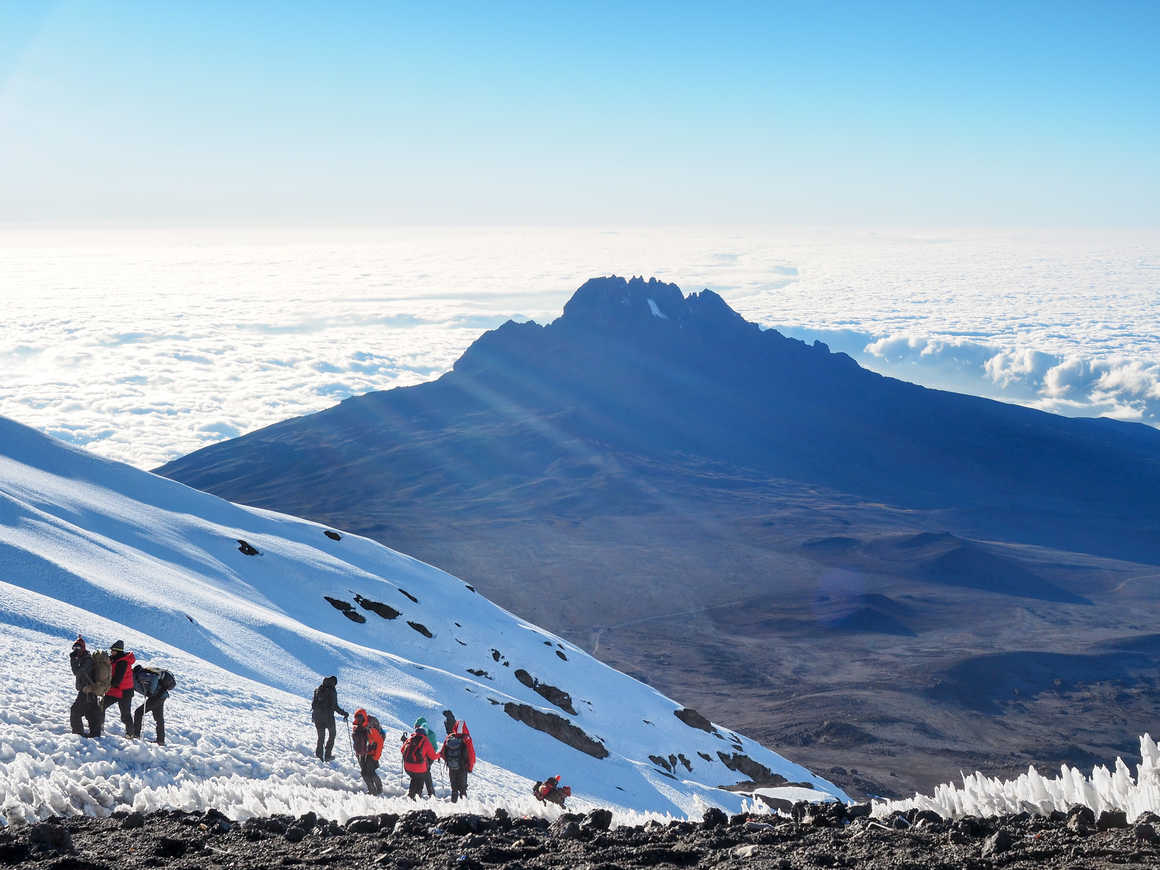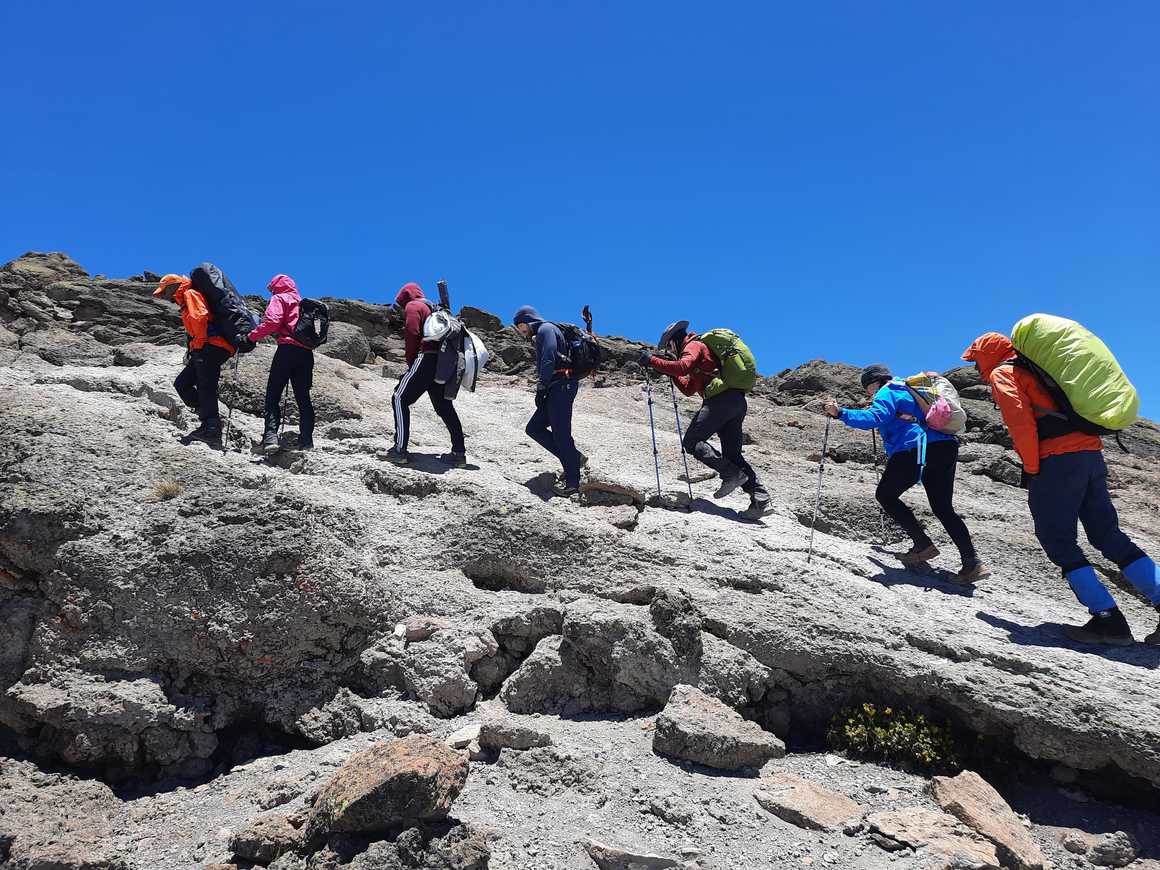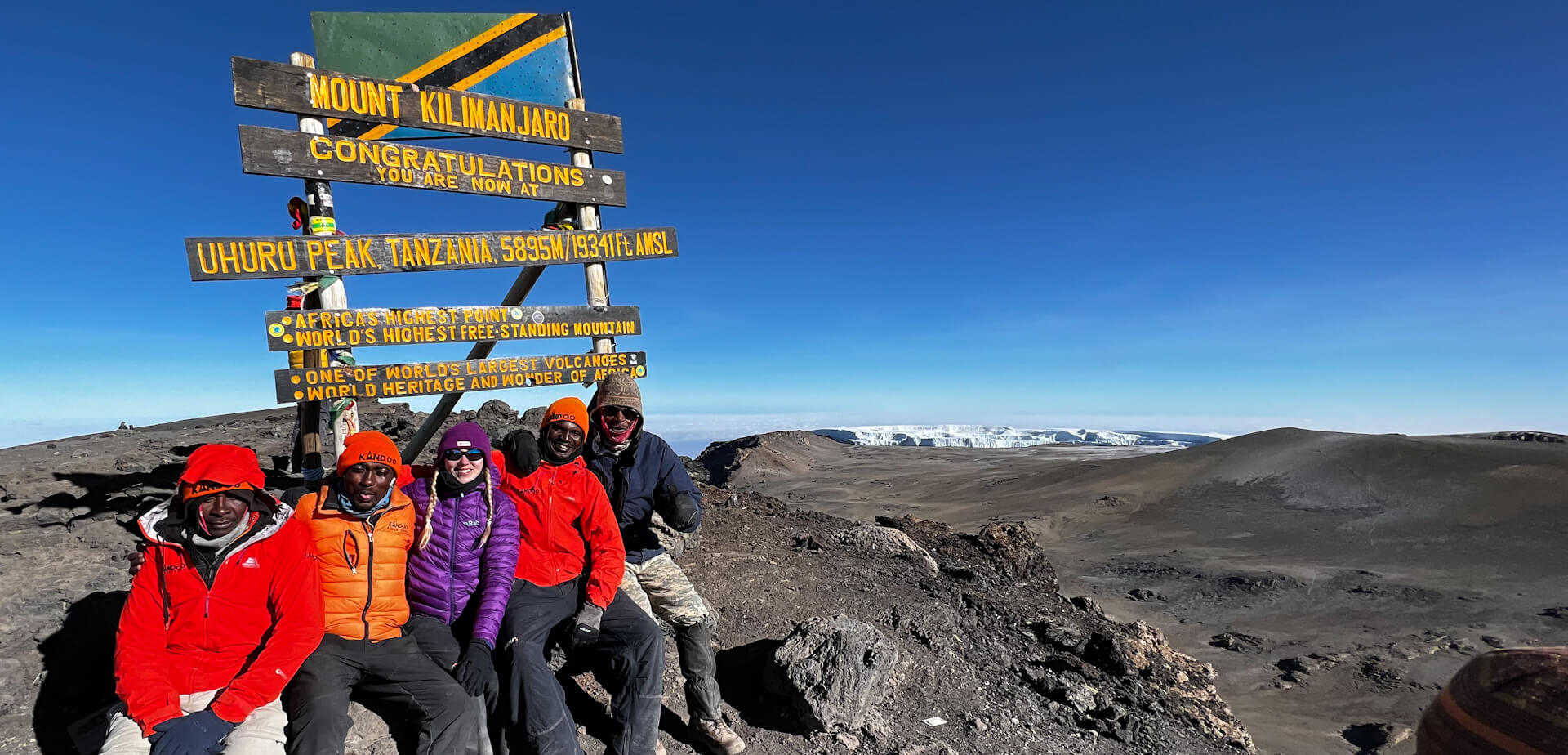Fitness and training plan for Kilimanjaro
One question we get a lot is 'how fit do I need to be to climb Kilimanjaro?'. Whilst a high level of fitness will make the climb a lot easier it by no means requires super human fitness. We often take people who have left their fifties well behind them and are not in peak physical condition. This being said, a solid Kilimanjaro training plan will allow you to better prepare for the climb and give you more opportunity to enjoy yourself when you're on the mountain.
The bare facts are that you will probably be walking 6-7 hours per day with a rough accent of a 1000m. You'll need determination, Kilimanjaro is a long slow grind that can wear you down. If you can complete an hour spinning class or jogging for a solid 45 minutes, or take on a big hike up a Lake District mountain without feeling completely and mentally destroyed then you're probably suited to trekking up Kilimanjaro.

Practice Hiking
Like most things, practice makes perfect. There is nothing more important on your Kilimanjaro training plan, so get your hiking boots on and start trekking.
Hiking practice allows you to understand the stress your joints will be put under and how well you can deal with this. It also allows you to wear in your boots as this takes some time and can often be uncomfortable. Start with a comfortable distance that suits you and slowly try to work your way up to a 5-6 hour trek. If you can do this a few times then you'll be in good stead to climb Kilimanjaro.
Aerobic Training
Aerobic (or cardio) training will be a key factor in allowing you to climb Kilimanjaro. Aerobic literally means 'requiring free oxygen' and refers to the use of oxygen to adequately meet energy demands during exercise via aerobic metabolism.
Aerobic exercise builds up your cardiovascular system allowing you process limited oxygen in a more effective way. This is key for Kilimanjaro as it is a long distance exercise at altitude which will give the body less oxygen per breath.
Aerobic exercise, unlike anaerobic exercise, requires oxygen for elongated periods of time. Examples of aerobic exercise would be lane swimming, long distance jogging, walking and cycling.
One crucial thing we tell our customers is don't rush up the mountain! Trying to ascend too quickly is a huge mistake. Our porters can often be heard saying "Pole Pole", meaning 'Slow Slow' in Swahili. Because of the altitude your body needs time to adjust - no matter your fitness levels! However, having a good cardiovascular system will help with this, but it wont prevent it. Kilimanjaro is not a sprint, it's a marathon! We recommend putting the slowest hiker to the front of the group.
Depending on fitness, we recommend a 3-6 month Kilimanjaro training plan. Your hiking practice will help, but we also suggest running 6-12km three times a week. If you're using a treadmill remember to set a slight incline.

Strength Training
Any Kilimanjaro training plan should also include strength training. Although not as important as your aerobic training, strengthening your upper body, core and, in particular, your legs, will greatly increase your chances of success. You'll be on your legs at least 7 hours a day, you therefore need them to be strong enough to take the punishment.
To strengthen your legs we recommend doing the following exercises:
- Squats
- Front and reverse leg curls
- Lunges
- Step aerobics
Remember when doing these exercises to keep watch of your technique. Exercises done with poor technique will more often than not harm you instead of help you.
Building upper body and core strength is also crucial as you'll not only be standing for hours, but you'll also be carrying gear.
We recommend the following exercises to strengthen your upper body and core:
- Shoulder presses
- Back and shoulder flyes
- Sit-ups
- Kettle-bell rows / swings
Remember to stretch after all exercise sessions! Increasing flexibility will allow your body to recover more quickly overnight after trekking all day. No one wants to trek for 7 hours after waking up with stiff joints aching all over!
Mental Stamina
Just as important as physical stamina is mental stamina and attitude. There always comes a point (most often during summit night) that you will want to quit and just head back down the mountain. Keeping a positive attitude and digging deep to push through is incredibly important and a valuable skill.
Training your mental stamina is no easy thing, but there are ways to accomplish it. You essentially need to construct an activity that pushes your body to what it thinks is its limit, then you need to push past that to reach your goal.
A great way to achieve this is long distance running such as half marathons and full marathons. A marathon will push you to your limit whilst having an achievable goal in sight - the finish line. If you can do this with a friend or training partner then all the better as you will both push each other to achieve more. Remember, it's that final push when your head is telling you to stop that will allow you to get into the state of mind required to scale Kilimanjaro.

In conclusion - Kilimanjaro training plan
Climbing Kilimanjaro is an incredible experience and, with a Kilimanjaro training plan, can be achieved by most, regardless of age or physical condition. Once you have your cardiovascular system up and running then all you need is a positive attitude and a willingness to push yourself.
More important than this is allowing your body to acclimatize to the altitude. More often than not, climbers will not reach the summit due to altitude issues. We recommend reading this article as it provides detailed information in preparing for altitude acclimatization.
If you have any questions about the Kilimanjaro training plan then feel free to get in call us on +441283499980 or send us a message.










